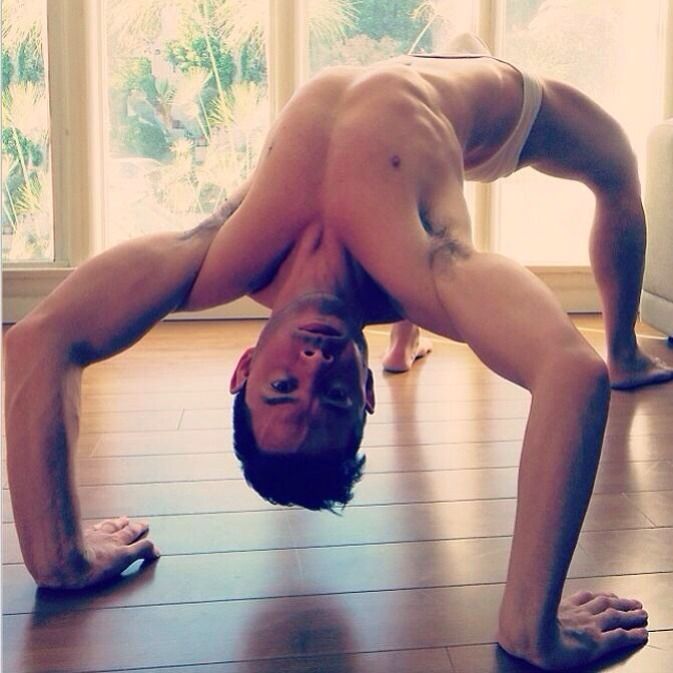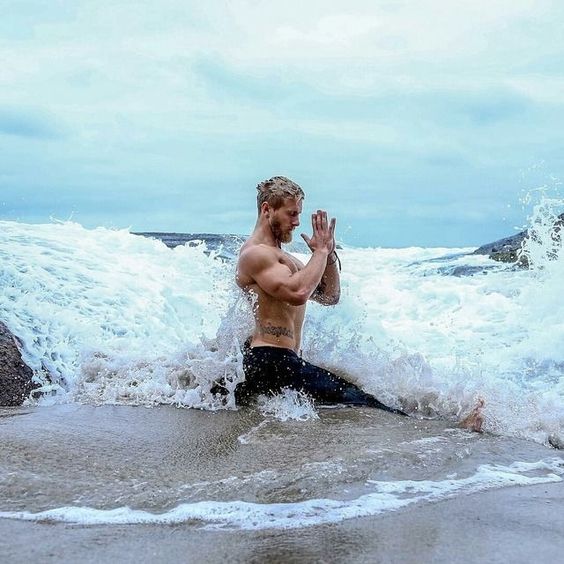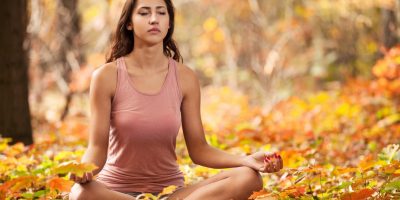Question: I’ve been interested in doing yoga and have tried it a few times. How did you get into yoga? What attracted you to it? The classes seem to be predominantly women. Have you thought about why more men aren’t on the yoga mat?
Frank answers:
I got into yoga as part of my physical and mental rehabilitation after a year of chemotherapy following a colectomy for colon cancer (2006-2007). I had joined an active older adults class at the YMCA. Our original trainer picked up a strange disease swimming off the coast of New Zealand and had to stop teaching. His place was taken taken by one of the yoga teachers at the Y who was an RN. At first we were doing chair yoga. When she asked if anyone wanted to try yoga on the floor, as one of the youngest in the class (I was 65) I took up for challenge.
I instantly liked it and began attending her regular yoga classes. She was a good beginning teacher for me because I had also shattered my left elbow and had an elbow replacement. She helped me with alternatives, including using a block for my left arm in downward dog, plank, and other poses that required both hands on the floor since my left arm doesn’t fully extend. Taking a regular yoga class reminded me of gymnastics in elementary school physical education classes when I was a boy. In fact, when I later began studying the history of yoga I read that modern postural yoga was influenced by the physical culture movement as promoted by the YMCA in India. See Mark Singleton, Yoga Body: The Origins of Modern Posture Practice (Oxford University Press, 2010).
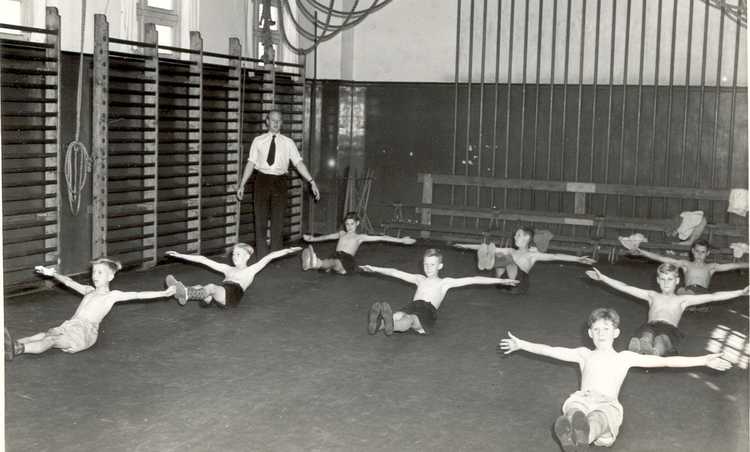
In fact, doing yoga poses kicked in my motor memory and I remembered that I had been in the 7th and 8th grade Boys’ Gymnastic Show.
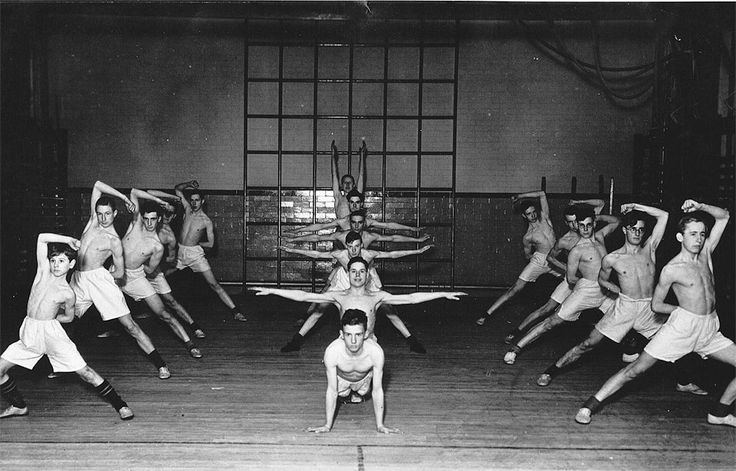
The father of modern postural yoga was T. Krishnamacharya, the yoga instructor at the Mysore Palace in South India where the Maharaja promoted the Western physical culture movement. Here’s a photo of Krishnamacharya with his yoga students in the same time period as the above photo.
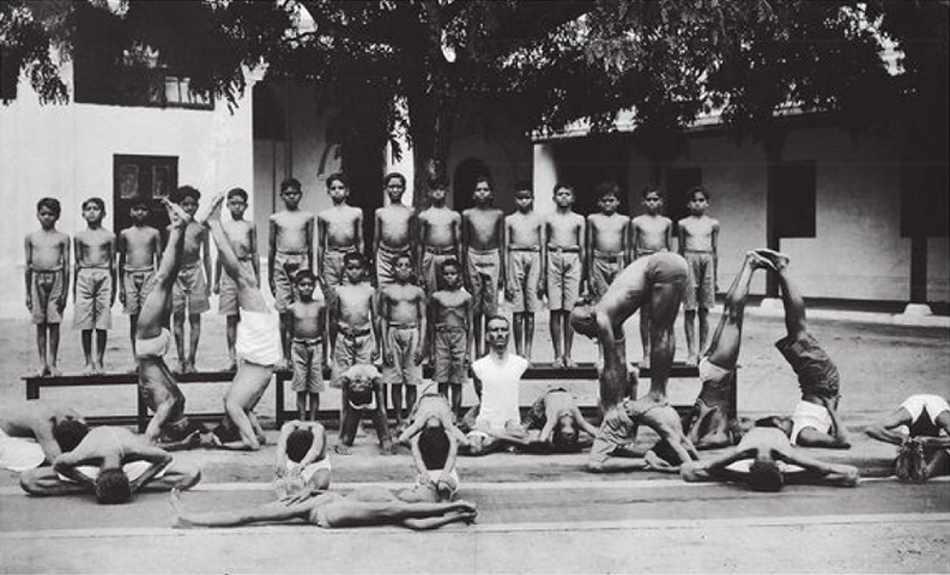
Yoga as Ritual
As a student of liturgy and ritual, I also saw a ritual process in the typical sequence of yoga practice and this appealed to me. Ritual is a routine way of doing something. It suggests an order to a sequence of actions. This ritual structure applies to bodily exercise routines that includes warm-ups, movement in a vigorous practice, and final cooling down. It’s the same in yoga, but yoga practice adds intentional breath work (usually at the beginning) and meditation (usually at the end). Thus, a typical yoga class sequence would include opening dharma (instruction or teaching), breath work, warm-up stretches (done on the mat or standing), standing poses, mat poses including twists, and final savasana (corpse pose).
Sometimes more ritual elements will be added such as ringing a bell to indicate the end of savasana (waking the dead, I’ve thought) and chanting OM. Even coming out of savasana is done in ritual stages: stretching the body to full length (arms overhead on the floor), bringing knees to chest in a body curl, rolling to the right side for a moment, and moving up into a sitting position (padmasana) for meditation. As you visit yoga classes you will experience greater or lesser emphasis on the various parts of this sequence (modern postural yoga will focus mostly on the asanas). But the component parts of the ritual sequence will be included.
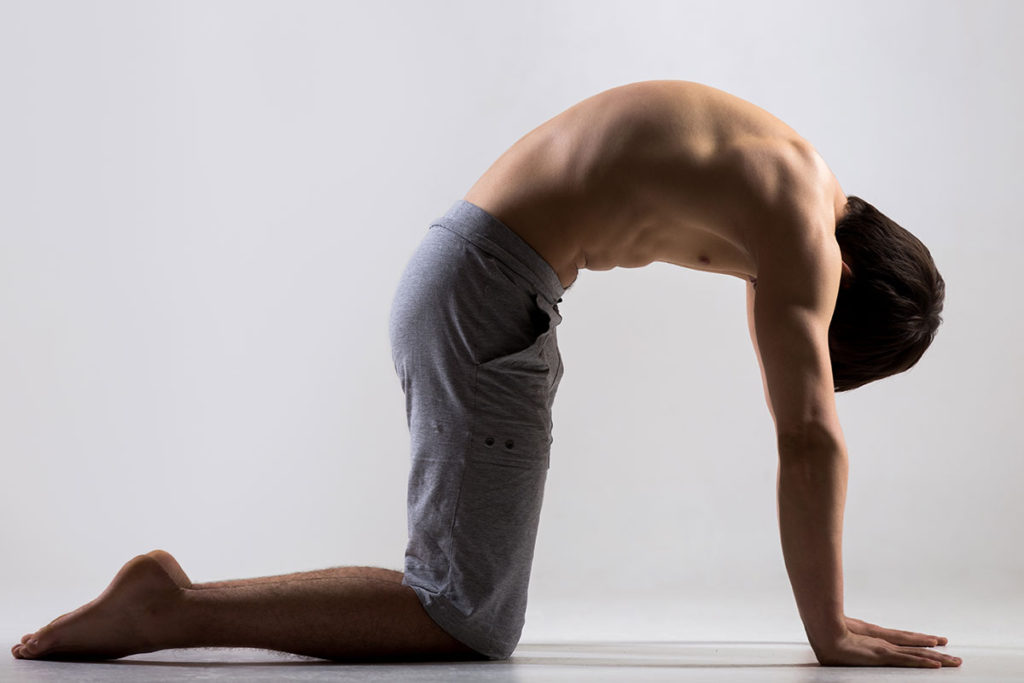
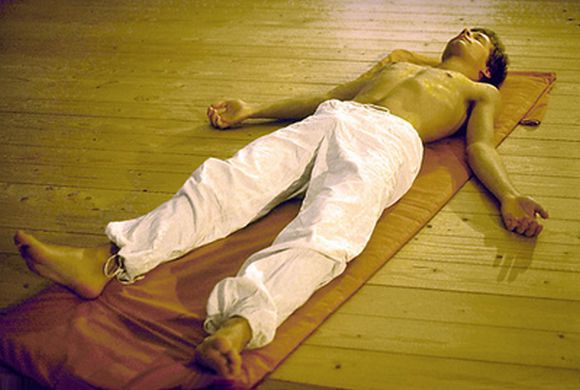
Yoga as Cosmology
When you have such a well developed ritual, there’s usually mythology behind it. Mythology is a way of making sense of reality as it is experienced by story telling. One would have to go back thousands of years to discern what the mythology would be. David Gordon White has traced tantric sexual rituals to fertility rites in Kiss of the Yogini: “Tantric Sex” in its South Asian Context (University of Chicago Press, 2003). Fertility rites would emerge from an agricultural society that is directly related to the Earth and its seasons. Ancient Indian cosmology, like the cosmology of the Greek philosophers, discerned four natural elements: earth, air, fire, and water, to which yoga adds space or ether as a fifth element. In fact, the ritual of the typical yoga sequence accounts for all of these elements: breath work = air/wind/prana; stretches stir up the liquid content of the body, which is mostly water; standing poses and twists ignite fire (heat = tapas) in the body; concluding ground poses and savasana relate to earth; chanting opens the throat and suggests the space element.
These elements can also be related to seasons of the year. It strikes me that the water relates best to late winter/early spring, wind relates to late spring/early summer, earth relates to late summer/early fall, fire relates to late fall/early winter, the space element can be practiced between any of the others. In my scheme the elemental seasons straddle each side of the winter and summer solstices and the spring and autumnal equinoxes since the climate conditions are similar before and after those astronomical dates. The body senses when a change is occurring and a shift in practice is needed. Yoga practice embodies cosmology, which is enacted in the ritual sequence but may also receive a special emphasis within the season to which it best relates. I’ve written articles on the elements as related to yoga.

Tantra, which is the basis of Hatha yoga, views the body as the microcosm of cosmos and in its mythological guise the indwelling of divinity — Shakti as the kundalini serpent surging up through the chakras to connect with Shiva. Shakti/Shiva can be demythologized as energy connecting with consciousness: body/mind. I think the cosmological aspect of yoga this would appeal to men more than the purely subjective psychological aspects that have also been probed in yoga practice and that is present also in the modern interpretations of the chakras (energy centers in the body that are located in the perineum, pelvis, sacrum, abdomen, heart, throat, third eye, and beyond the head).
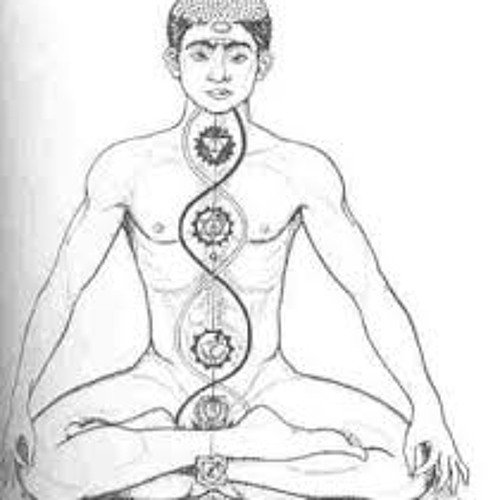
How Many Men Are Practicing Yoga?
Of the more than 20 million people in the U.S. practicing yoga, what percentage of them are men? In mixed gender classes I’ve attended, I’m guessing that roughly about 15-25% of the students are men. I’ve attended classes also in teacher training centers such as Samasati Resort in Costa Rica, Seven Centers Yoga Arts in Sedona, AR, and Kripalu Center for Yoga and Health in Stockbridge, MA, and observed that the percentage of men was about the same ratio of men to women I’ve experienced in regular yoga classes (maybe on the upper end of the ratio). This is quite the opposite from yoga’s homeland in India, where yoga has been a male-dominated practice for millennia. However, today yoga in India is practiced by both men and women.
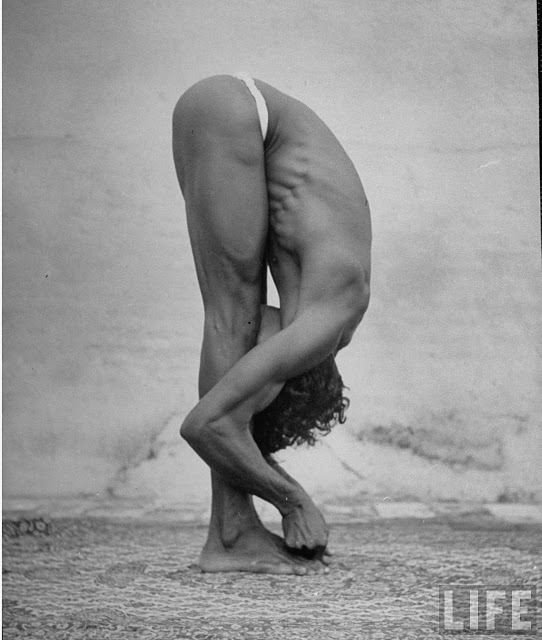
I’ve looked through the pages of issues of Yoga Journal and I see pictures of one or two men in a magazine that has dozens of pictures of women. I had to look through dozens of photos of yoga classes on the internet to find a free image to post here that had at least one man in the picture. I don’t object to women practicing yoga. But where are the men?
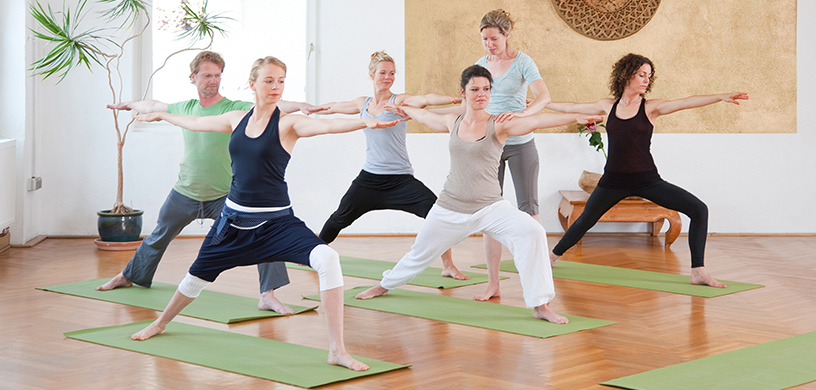
How Yoga Became Feminized
It’s odd that yoga has become such a female-dominated activity in the U.S. and the rest of the Western world. It was practiced mostly by men in India. It was brought to the West primarily by male gurus. Maybe the gurus from India in early 20th century America attracted women followers who were interested in their spirituality. Krishnamacharya had women as well as men students, as you can see in this photo of an adult yoga demonstration at the Mysore Palace.
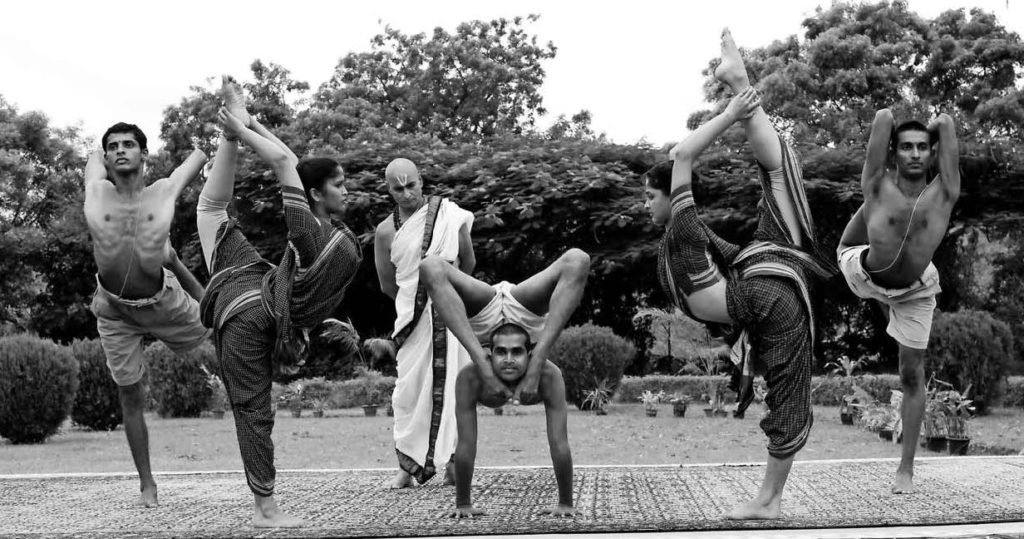
Krishnamacharya’s most famous female student was Indra Devi, who was actually a Latvian with a Russian heritage who spoke perfect English with an accent. She migrated to Los Angeles in 1947, set up a studio on Sunset Boulvevard in West Hollywood, attracted some film celebrities like Greta Garbo and Gloria Swanson, and published some popular books that became best sellers, which raised the interest of women. Then having yoga gurus leading 30 minutes of yoga on daytime TV back in the 1950s and 1960s got women homemaker viewers into it. In the fitness craze of the 1980s and 1990s maybe yoga was something that appealed to women more than lifting weights or running on treadmills. In the process yoga became primarily asana (postural) practice. This had the effect of changing the character of yoga from an experiential philosophy of mind-body connections centered on meditation (the purpose of the asanas was to still the body for meditation) to a physical fitness routine.
Thus, a practice that had developed with male bodies was being taken up by women as a fitness regimen for them, increasingly taught by women, and inevitably it became more geared toward the needs (and abilities!) of female practitioners. It is also noteworthy that the wider pelvic girdle in female anatomy enables women to be more flexible in poses developed by men than adult men. When men compare themselves with what women can do, it becomes discouraging.
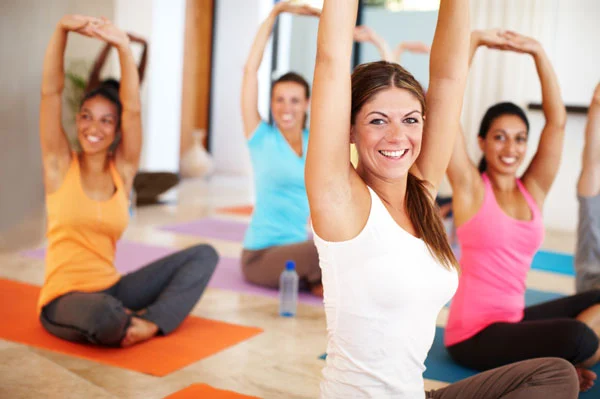
As men discovered that they needed exercise because they were spending too many hours during the day sitting at a desk they got into sports like hand ball and body building and running on treadmills in the gyms. Maybe yoga didn’t look macho enough. The situation began to change a bit with the more vigorous types of yoga brought to America by Sri K. Pattabhi Jois (branded Ashtanga Yoga), Bikram Choudhury (branded Bikram Yoga), and Baron Baptiste (power yoga). I tried Bikram Yoga for a while and sampled Baron Baptiste’s Power Yoga a couple of times just for the experience. There were definitely more men in these classes, but the majority of students were still women. Some men like Bikram Yoga or some form of Power Yoga because it seems like a real workout. Practicing 90 minutes in sauna-like conditions is indeed a physical and mental challenge. There’s no doubt that men practice yoga for the workout while women are more interested in its spirituality.
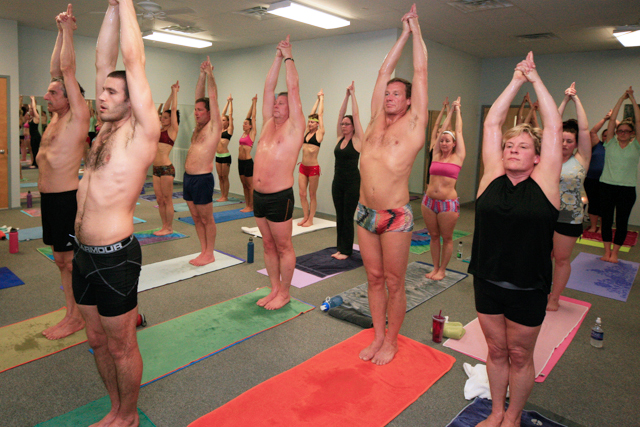
Shirtless yoga?
One advantage men have in Bikram or other hot yoga classes is that no man in his right mind would wear a shirt in sauna-like conditions. In some gym-type settings with a lot of women present, men are encouraged (even required in the YMCA and other gyms) to keep their shirts on. No prana bath is allowed (that’s the energy that comes from a breeze evaporating sweat). But what about in other yoga situations such as private studios? Thomas Harris, a Y7 Studio instructor in Los Angeles said: “Outside of the room being hot, wearing a t-shirt in the studio is not always going to feel comfortable! Being that men’s t-shirts are not always form fitting, like sports bras you see girls wearing to hot yoga classes, having a looser t-shirt on that has become completely soaked with sweat is not ideal when practicing yoga. The shirt will weigh you down and literally will be dripping!”
It’s probably always best to ask the instructor if you’re uncertain about whether shirtlessness is allowed. My feeling is that if women can wear sports bras, men can be shirtless. If that’s not allowed, there should be a sign on the premises that says “shirts on.” The issue, of course, is dripping sweat, which could splatter on an adjacent mat. If men sweat a lot, the problem is solved by bringing a towel to yoga practice and using it. I prefer to practice shirtless. When a female program director at the YMCA told me to wear a shirt in yoga class because the Y is a family organization, I told her it was a family organization before the 1970s when boys and men swam and exercised naked. I cancelled my membership. My issue with shirts is not that I sweat a lot but that one is always fussing with them (perhaps even unawares). I like the sense of freedom that shirtlessness offers. See Frank Answers about Male Shirtlessness. Yoga is about freedom, not freedom from the body but freedom of movement in the body.
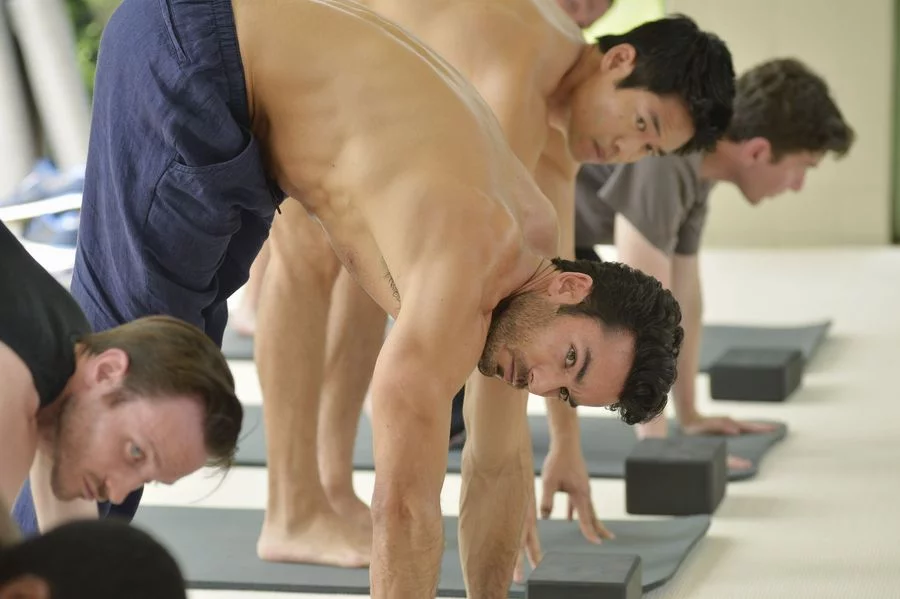
Masculine Yoga Images
I think one of the problems for men doing yoga in a female-dominated practice is that the practice lacks a male tone in the instructions and male images. Jungian analysts Robert Moore and Doug Gillette, in King, Warrior, Magician, Lover: Rediscovering the Archetypes of Mature Masculinity (San Francisco: HarperCollins, 1990), found that the characters in male legend, myth and story circle around four dominant images: the king, the warrior, the magician or guru, and the passionate lover. We should not be surprised that these images shape the male “soul” in both mature and immature ways.
We see these images in yoga history. The ancient yogis were fierce naked warriors who served local kings for a time and then returned to society to get a regular job, become householders, marry and raise a family. Later in life when he no longer had social responsibilities, the yogi might go off into the forest or a cave in the mountains to become an ascetic. Such yogis were often sought out for their wisdom.
The king sits on his lotus throne (that’s what an asana is) deep in meditation.
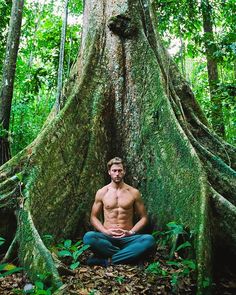
The warrior tradition was part of yoga history.


Yoga had magicians who could perform remarkable feats like flying through the air or taking possession of other bodies. Their role was taken up by wise gurus dispensing wisdom.
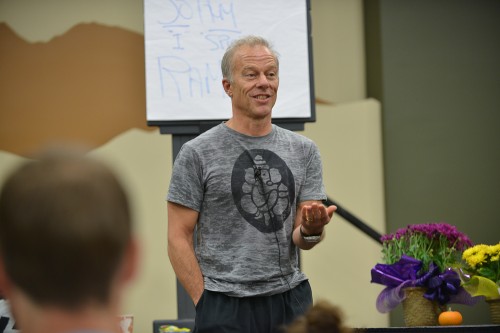
Passionate lovers were formed by Tantric initiation to learn how to manage sexual energy.

It’s not surprising that tantric initiation appealed to new age devotees. But you will not find this in ordinary yoga classes, although tantra is the basis of the Hatha yoga that is the basis of postural yoga. In fact, there is a sexual aspect to yoga, although teachers don’t discuss it. But if your pelvis and male appendage is pressing onto the floor in cobra or locust pose or thrusting upward in bridge or wheel pose, and you are breathing into the pose and the blood is flowing into the genital area, you can feel sensations in your enlarging penis.

Updated in our contemporary cultural context, these archetypal images would surely appeal to men. The king represents the energy of a just and creative ordering of life. The warrior represents the energy of aggressive but nonviolent action. The magician or guru represents the energy of initiation and transformation of mind. The lover represents the energy that connects one to another and to the world.
As yoga became female-dominated in terms of both teachers and students, yoga became feminized. Women have found their own dominant yoga images in Shakti (the divine feminine) and yogini power. Recovering a feminine basis for yoga practice may have been a necessity since women practitioners dominate a practice once dominated by men. But the result of the feminization of yoga is that men have stayed away—a situation not unlike churches. Neither the dominant images nor practices of many yoga studios appeal to ordinary men.
It may also be the case that yoga teachers address the issues of the students they have, and if most of the students are women and if most of the teachers are women, the issues men have (perhaps in flexibility, but also dealing with the expectations of men in today’s world) don’t get addressed. My hunch is that classes that attract men are going to have to tap into the male images of king, warrior, guru, and lover.
Yoga Classes for Men
Yoga classes have been springing up over the past decade that appeal primarily to men. Some studios offer classes just for men. One example is Yogasmith in Seattle, which is directed by Joel Benjamin, and offers a classical Hatha yoga practice for men of all abilities each week.
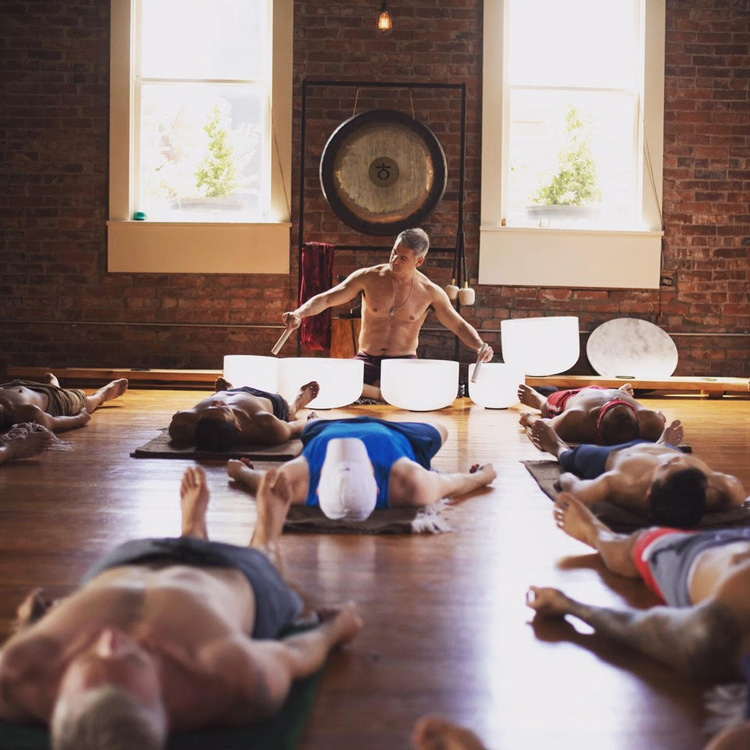
Men’s naked yoga classes can be found in many American cities (although there are also naked yoga classes for women and a few that are co-ed). Those who practice naked like the freedom of movement, the feeling of empowerment, and the increased flexibility that comes from moving one’s body without being encumbered by clothing. Men’s naked yoga classes have good teachers who know the needs of the male body. The classes attract men of different ages and body types and sexual orientations who are serious about yoga, respect the body, and encourage one another. And, quite frankly, many men enjoy opportunities for social nudity. See Frank Answers About Naked Yoga.
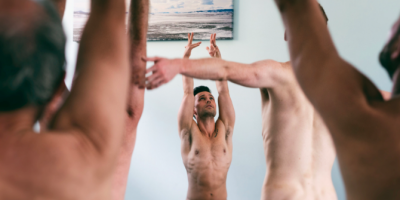
Studios that offer naked men’s yoga might also offer partner yoga in which men assist one another or form joint poses, as in Brandon Anthony’s Naked Men’s Yoga and Tantra classes.
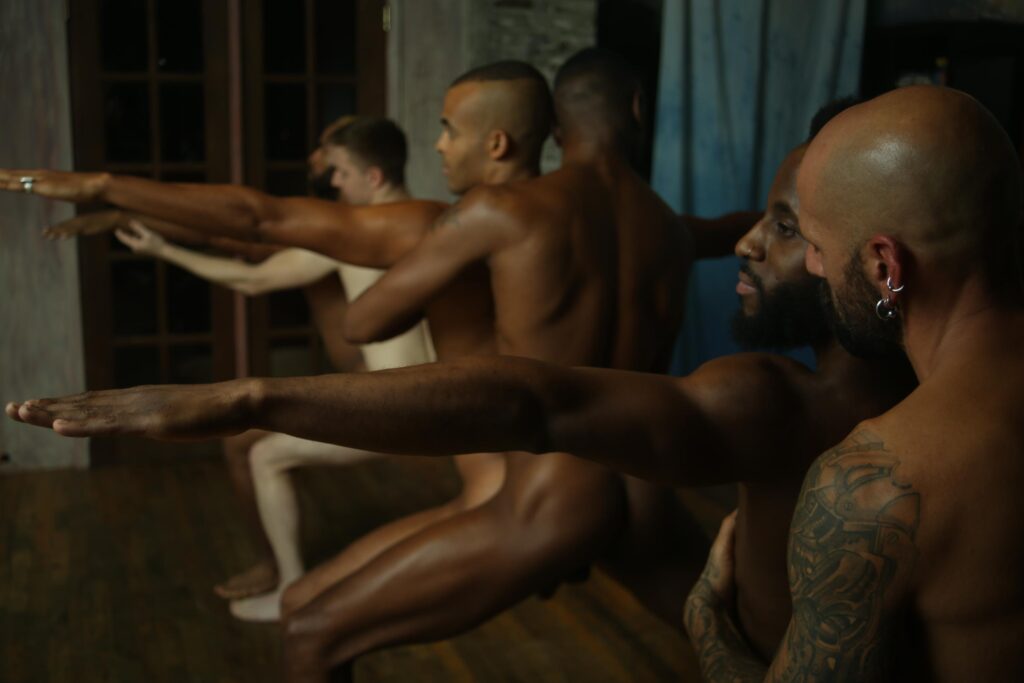
For those who want to keep their pants on there’s Broga (yoga for bros) that emphasizes a more macho approach to yoga, as in this video image. The problem with an over-emphasis on the masculinity of yoga is hyper-masculinity. One aspect of that is competitiveness. Yoga is not a competitive sport. The practice ought to be more than a physical workout. Yoga is about body-mind connections.

Let’s also face the fact that men like to be challenged physically. One such challenge is to “take the bind.” This means connecting hands in awkward positions, like under the leg and behind the back. Most men report that in their first yoga experiences, it was much more demanding physically than they expected. That’s because a well rounded yoga class works ALL the muscles.

When men come together for yoga, issues of masculinity and male sexuality are likely to emerge that can best be dealt with in a retreat format in which men can share their stories in a safe and non-judgmental space. Craig White offers a 3-day Men Without Masks Retreat at Hridaya Yoga’s international center in Mazunte, Oaxaca, Mexico that explores what it’s like to be a man in today’s world.

Thus, there are new opportunities and reasons for men to consider taking up the practice of yoga. Today with even professional football players practicing yoga, you’d think men would reconsider. But when I invite friends to come to the studio and practice with me, I get into discussions like the following (what follows is almost a verbatim!).
Dialogue With A Prospective Yogi
I know yoga would probably be good for me, but I’m not very flexible.
Answer: You don’t stay away from the gym because you’re too weak. You go to build up strength. Just as you build up strength through repetitions of lifting weights, so you build up flexibility through practice.
(The problem is that men who try yoga quickly see that the women who dominate class enrollments are more flexible. That can be de-moralizing.)
All that chanting and meditation. I’m not too much into spiritual stuff.
Answer: Meditation serves to focus the mind so that mind and body can work together. Yoga is a union of mind and body, of energy and consciousness (Shakti and Shiva). The word “yoga” means “to yoke”—like an axle connecting wheels. In fact, that’s the oldest use of the term “yoga”—the yoking of chariot wheels (chakras). Chanting creates vibrations in the body that connect with the vibrations in the universe (cosmos). It’s a powerful experience hearing a group of men chanting together—loudly—as the ancient yogis undoubtedly did as battle cries.
Isn’t yoga like a religion? Doesn’t it come from Hinduism?
Answer: Well, if you were a Hindu, you might worship the goddess Shakti or the gods Shiva or Krishna, who are associated with yoga traditions. Actually, Lord Shiva, the god of yogis (who represents awareness or consciousness), is pretty neat and the goddess Shakti (who represents the energy of the body) wants to hook up with him. Getting them together is what Hatha Yoga is all about — connecting body and mind, energy and consciousness.
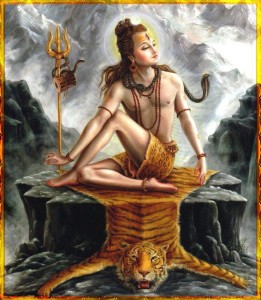
But I’m not aware of any worship of a yoga god in ordinary American yoga studios, and YOGA IS NOT A RELIGION. There are no yoga priests. It is an ancient yet ever evolving mind-body practice whose techniques have been used by several religions (including Hinduism, Buddhism, Jainism), by people with no religion, and also by some Jews and Christian.
What would I need to buy to start doing yoga?
Answer: A mat. That’s basic. But there are all kind of mats on the market today. How do you know which ones are of good quality and are just right for you. Reviews.com created a comprehensive guide detailing the most important features in a yoga mat, as well as key materials to keep an eye out for (and which to avoid). What is suitable for a yogi depends on a variety of personal factors, and this guide makes recommendations for a range of preferences and needs: https://www.reviews.com/best-yoga-mat/
Most studios are equipped with mats, blocks, straps, blankets, cushions and other aids used in modern yoga. If you can’t reach the floor with your hands in a standing pose, for example in an extended triangle pose, you can use a block (as in this photo). Blocks and straps and even blankets and cushions can continue to be useful if skillfully used by the teacher. The props are not just for beginners. Even walls and chairs can be used as props. One of my male teachers said, “in balancing poses let the wall be your friend.”

What should I wear to yoga class?
Answer: (Ah, now he’s showing some interest.) Well, you see what they wore at Mysore. Just kidding! Do you have a pair of gym shorts or running pants? I prefer the wide legged Thai Fisherman’s pants that you can buy for $20.00 on Amazon.com (as in the photo at the end of this article of me and my Indonesian friend Emil). They are flexible and the legs can be easily pulled up if you want to grab your knees or behind your thighs in a floor pose. Do you have a tight t-shirt? You don’t want a loose t-shirt that falls down and gets in your face in inversion poses or gets heavy when wet with sweat.
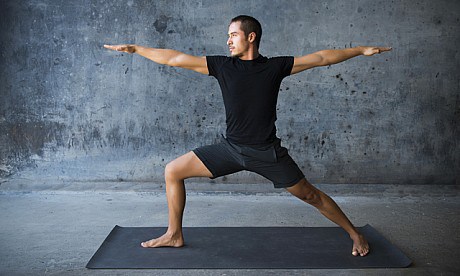
This outfit will do nicely. Warrior II pose.

As I wrote above, you could also practice shirtless if the studio is OK with that. It’s actually better. The wind evaporating the sweat off your bare skin is very energizing. (The women have figured this out and many wear halters in which their arms, shoulders, and lower torsos are bare.) You don’t need expensive Lululemon clothing. They don’t have much for men anyway.
How will I know what to do?
Answer: The yoga instructors give detailed directions and they come around to help individuals with proper alignment (as in this photo of an Iyengar Yoga brand teacher using a strap with a student).

Will I be sore afterward?
Answer: This will be a workout and you will use all your muscles, including some you haven’t used recently. But the stretching exercises also lengthen muscles and relieve some of the tensions. If you’re feeling sore after class, go home and take a hot shower and maybe a couple of ibprofens. Then go back to the practice the next day or a few days later. You will discover your muscles being strengthened in ways that are more useful for daily life than just having big biceps. You will find yourself developing core strength that provides more stability than just having six-pack abs. In fact, just working on six-pack abs is counterproductive to developing core strength because the core is within you.

Will I be able to keep up with others in the class?
Answer: You focus on yourself and not on what others are doing. Yoga is not a competitive sport and it is very non-judgmental. What you do on your mat stays on your mat.
What do you think is most important about getting started?
Answer: Finding a teacher you like. This may require “shopping around,” but once you find a teacher you like stay with that teacher. Yoga was traditionally taught one-on-one by a guru to each student. Today we have classes. But if you go to a small studio and get to know the teacher, it is possible to develop a personal teacher-student relationship. You might even arrange for some private lessons with that teacher.
Yoga and Grace
I think I’ve covered the questions I’m usually asked when I’m evangelizing men about yoga. Now I’d like to suggest that often the real issue for men practicing yoga is the age-old human problem with grace. Grace is what we receive as a gift, not what we earn or deserve. Yoga gives its gift when we surrender our own effort and simply receive what the practice has to offer. But this is a difficult lesson for men (and for some women too!) to learn because we are competitive, especially when it comes to exerting physical effort. We think we have to earn everything we get. But yoga yields its benefits no matter how much effort we put into it. A good teacher will say, “If you’ve gotten this far in the pose, you’re getting the benefit it offers. For those who want to go further, here are embellishments you can add to the pose.”

There are also restful concluding poses in yoga classes such as this supported butterfly pose, in which the body can absorb the practice.
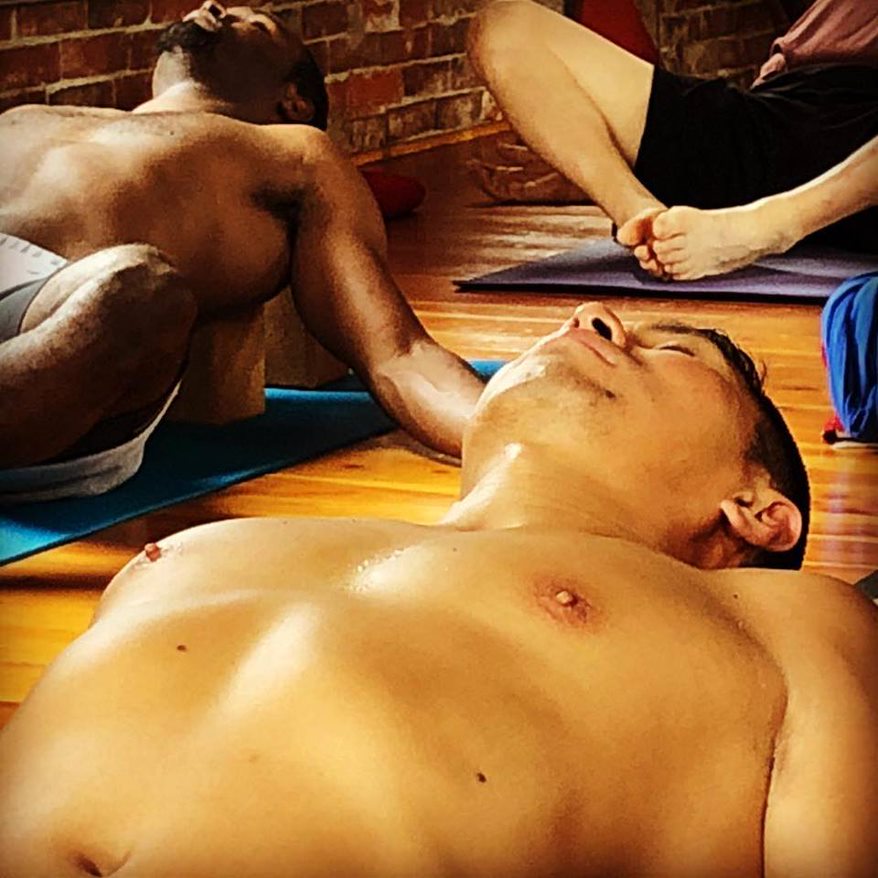
Young Men of Yoga
Is there any hope of getting more men to practice yoga? As in other areas of life, I look to youth to be the future we hope for. As professional athletes take up the practice of yoga, this filters down into the high schools, many of which now offer yoga classes as part of physical education.

Basketball players, football players, wrestlers, many boys sports teams are being introduced to yoga as a way of focusing their minds and bringing mind and body together. That’s certainly a benefit to athletes.
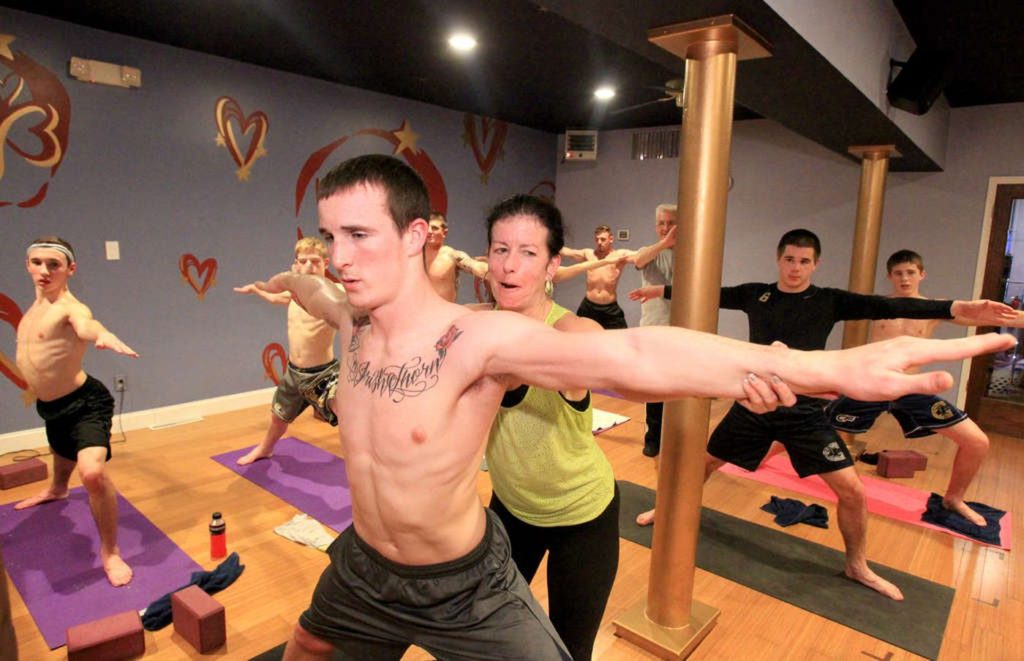
In the cultural birthplace of yoga, the practice continues to train the next generation of yogis, as in this little ashram.
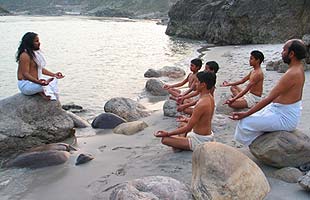
Finally, while yoga can be done by men and women of all ages, I find it inspiring to see young men not only giving themselves to the practice and but even to the teaching of yoga, like this young yogi in Essen, Germany.

Patrik Bitter is a young yoga teacher. The practice of yoga helped him to transcend a serious illness and radical surgery when he was 23 (requiring a permanent ostomy) and he has dedicated his life to teaching yoga to others. He has also become an Ayurveda practitioner. See his website at www.patriqio.com. It’s in German but you can tell that he exudes a youthful enthusiasm for yoga and sees the practice branching out from the studio into the wider community. Für die Leser meines Blogs in Deutschland, sage ich: Besuche Patrik Yoga Essen.
Yoga Buddy
Yoga tends to be a solitary activity. You may be surrounded by other yogis on their mats, but you’re doing you own practice on your mat. Men are used to having a workout buddy at the gym or a golf partner on the green. I think having a yoga buddy helps each partner to be regular in practice. Men like to compare notes. “How was your downward dog today?” “Man, that stretch really pulled my ham string.” I’ve tried to find men to accompany me to yoga class, often without success. However, it’s possible to make friends with another guy in the yoga class, especially in a men’s class. It makes yoga more fun to have someone to enjoy it with.

There’s no reason for men to avoid the practice of yoga and many reasons they should take up the practice. Yoga began primarily as a male practice in India. I’m not opposed to women practicing yoga. Even in India today more and more women are getting into yoga. But we need more men on the mats in regular studios as well as men-only classes.
There are many great female yoga teachers. I think men should also have the experience of a male teacher. I have had both experiences. Both have something to offer. But a male class taught by a male teacher provides a very different dynamic, especially male camaraderie that makes you want to return for more.
Men today, especially in the face of the toxic masculinity that is really the boy who was never initiated into mature masculinity, need opportunities to experience a wholesome exposure to mature masculinity. By stripping off the veneer of a false self-confidence that manifests itself in abusive and violent acting-out behaviors against others (men and women), yoga can provide an initiation into a more mature personhood. Men’s yoga classes can help men explore a true masculinity that does not eliminate our inner feminine and helps us overcome the fear that we have it. Ha-tha Yoga, sun/moon, body/mind, enables us to explore and grow into a healthy masculine identity.
Nameste
Yogi Frank


